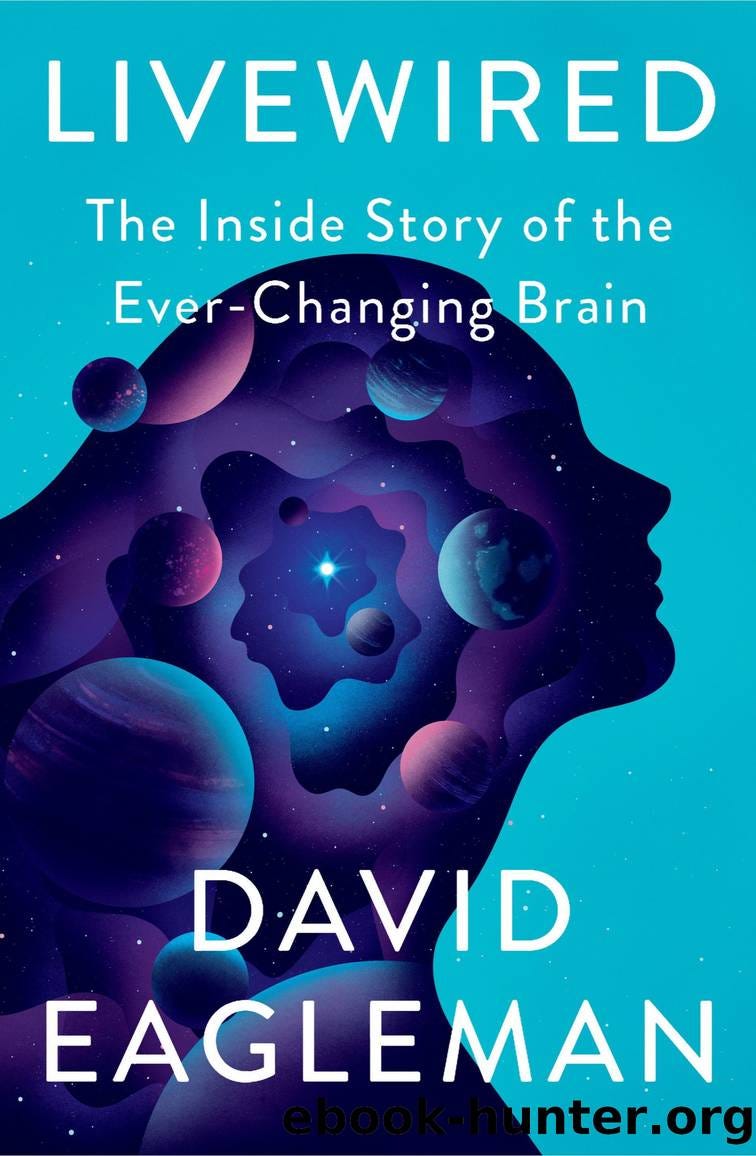37 | Livewired - David Eagleman (Part II of II)
What Does the Brain/Body Do?
Livewired, by David Eagleman.
“In textbooks, media advertisements, and popular culture, the brain is typically portrayed as an organ with different regions dedicated to specific tasks. This area here exists for vision, that swath there is necessary for knowing how to use tools, this region becomes active when resisting candy, and that spot lights up when mulling over a moral conundrum. All the areas can be neatly labeled and categorized.
But that textbook model is inadequate, and it misses the most interesting part of the story. The brain is a dynamic system, constantly altering its own circuitry to match the demands of the environment and the capabilities of the body. If you had a magical video camera with which to zoom in to the living, microscopic cosmos inside the skull, you would witness the neurons’ tentacle-like extensions grasping around, feeling, bumping against one another, searching for the right connections to form or forgo, like citizens of a country establishing friendships, marriages, neighborhoods, political parties, vendettas, and social networks. Think of the brain as a living community of intertwining organisms. Much stranger than the textbook picture, the brain is a cryptic kind of computational material, a living three-dimensional textile that shifts, reacts, and adjusts itself to maximize its efficiency. The elaborate pattern of connections in the brain — the circuitry — is full of life: connections between neurons ceaselessly blossom, die, and reconfigure. You are a different person than you were at this time last year, because the gargantuan tapestry of your brain has woven itself into something new.” (Page 7-8)
“[Y]our three pounds of brain tissue are not directly hearing or seeing any of the world around you. Instead, your brain is locked in a crypt of silence and darkness inside your skull. All it ever sees are electro-chemical signals that stream in along different data cables. That’s all it has to work with.
In ways we are still working to understand, the brain is stunningly gifted at taking in these signals and extracting patterns. To those patterns it assigns meaning. With the meaning you have subjective experience. The brain is an organ that converts sparks in the dark into the euphonious picture show of your world. All of the hues and aromas and emotions and sensations in your life are encoded in trillions of signals zipping in blackness, just as a beautiful screen saver on your computer screen is fundamentally built of zeros and ones.” (Page 54-55)
“When you look at the cortex, it looks approximately the same everywhere as you traverse its hills and valleys. But when we image the brain or dip tiny electrodes into its jellylike mass, we find that different types of information are lurking in different regions. These differences have allowed neuroscientists to assign areas with labels: this region is for vision, this one for hearing, this one for touch from your left big toe, and so on. But what if areas come to be what they are only because of their inputs? What if the “visual” cortex is only visual because of the data it recieves? What if specialization develops from the details of the incoming data cables rather than by genetic pre-specification of modules? In this framework, the cortex is an all-purpose data-processing engine. Feed data in and it will crunch through and extract statistical regularities. In other words, it’s willing to accept whatever input is plugged into it and performs the same basic algorithms on it. In this view, no part of the cortex is prespecified to be visual, auditory, and so on. So whether an organism wants to detect air compression waves or photons, all it has to do is plug the fiber bundle of incoming signals into the cortex, and the six-layered machinery will run a very general algorithm to extract the right kind of information. The data make the area.
And this is why the neocortex looks about the same everywhere: because it is the same. Any patch of cortex is pluripotent — meaning that it has the possibility to develop into a variety of fates, depending on what’s plugged into it.” (Page 66)
This is a summary of Eagleman’s “Potato Head Model of Evolution.”
“Your brain doesn’t want to pay the energy cost of spiking neurons, so the goal is to reconfigure the network to waste as little power as possible. If a pattern streams in that is predictable — or even partially guessable — the system saves energy by structuring itself around that input so as not to be surprised by it. A quieter nervous system means fewer violations of expectations: things in the outside world are going approximately as forecast. In other words, an energy-conscious brain wants to predict away everything possible so that it can save its energy for just representing the unexpected. Silence is golden. While many neuroscientists think of activity in neurons as the representation of things in the world, it could turn out that the truth is exactly the opposite: spikes are the unpredicted, energy-expensive part. The representation of something totally expected would be nothing but a hush falling over the neuronal forest.” (Page 167)
“Fundamentally, the brain is a prediction machine, and that is the driving engine behind its constant self-reconfiguration. By modeling the state of the world, the brain reshapes itself to have good expectations, and therefore to be maximally sensitive to the unexpected.” (Page 173)




